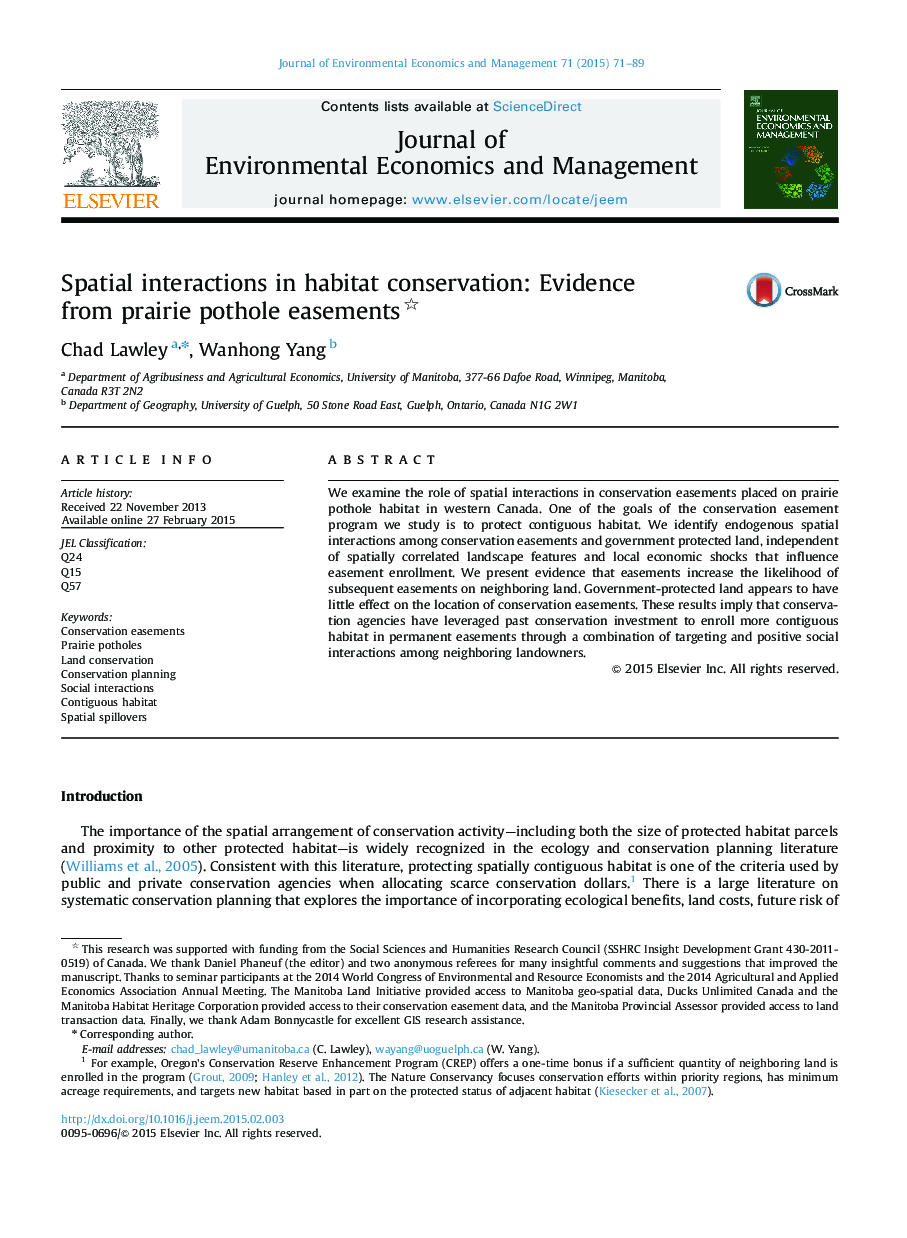| Article ID | Journal | Published Year | Pages | File Type |
|---|---|---|---|---|
| 959151 | Journal of Environmental Economics and Management | 2015 | 19 Pages |
•We examine the role of endogenous spatial interactions in habitat conservation.•Easements increase the likelihood of subsequent easements on neighboring land.•Government protected land has little impact on location of conservation easements.•Conservation agencies have successfully enrolled contiguous habitat in easements.
We examine the role of spatial interactions in conservation easements placed on prairie pothole habitat in western Canada. One of the goals of the conservation easement program we study is to protect contiguous habitat. We identify endogenous spatial interactions among conservation easements and government protected land, independent of spatially correlated landscape features and local economic shocks that influence easement enrollment. We present evidence that easements increase the likelihood of subsequent easements on neighboring land. Government-protected land appears to have little effect on the location of conservation easements. These results imply that conservation agencies have leveraged past conservation investment to enroll more contiguous habitat in permanent easements through a combination of targeting and positive social interactions among neighboring landowners.
